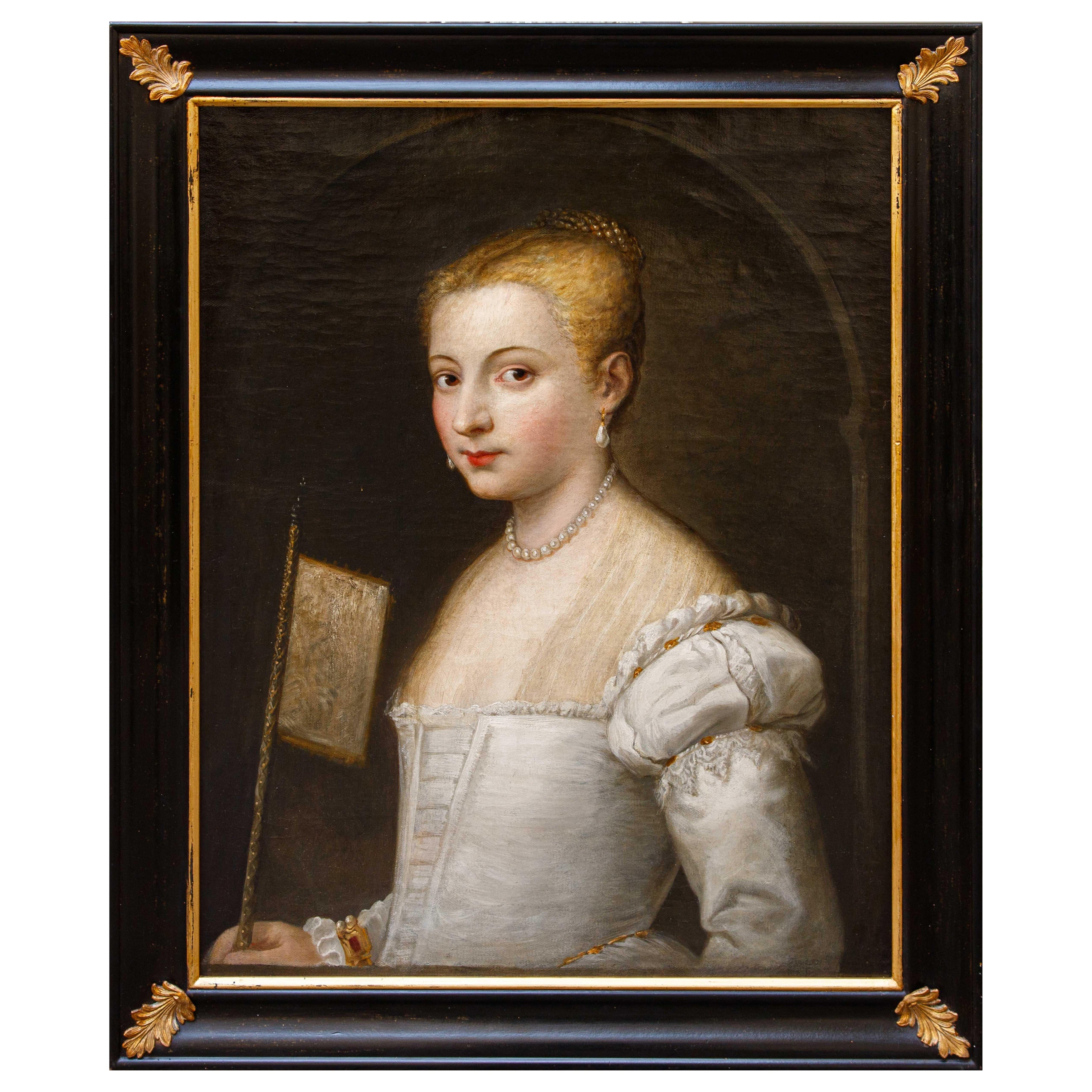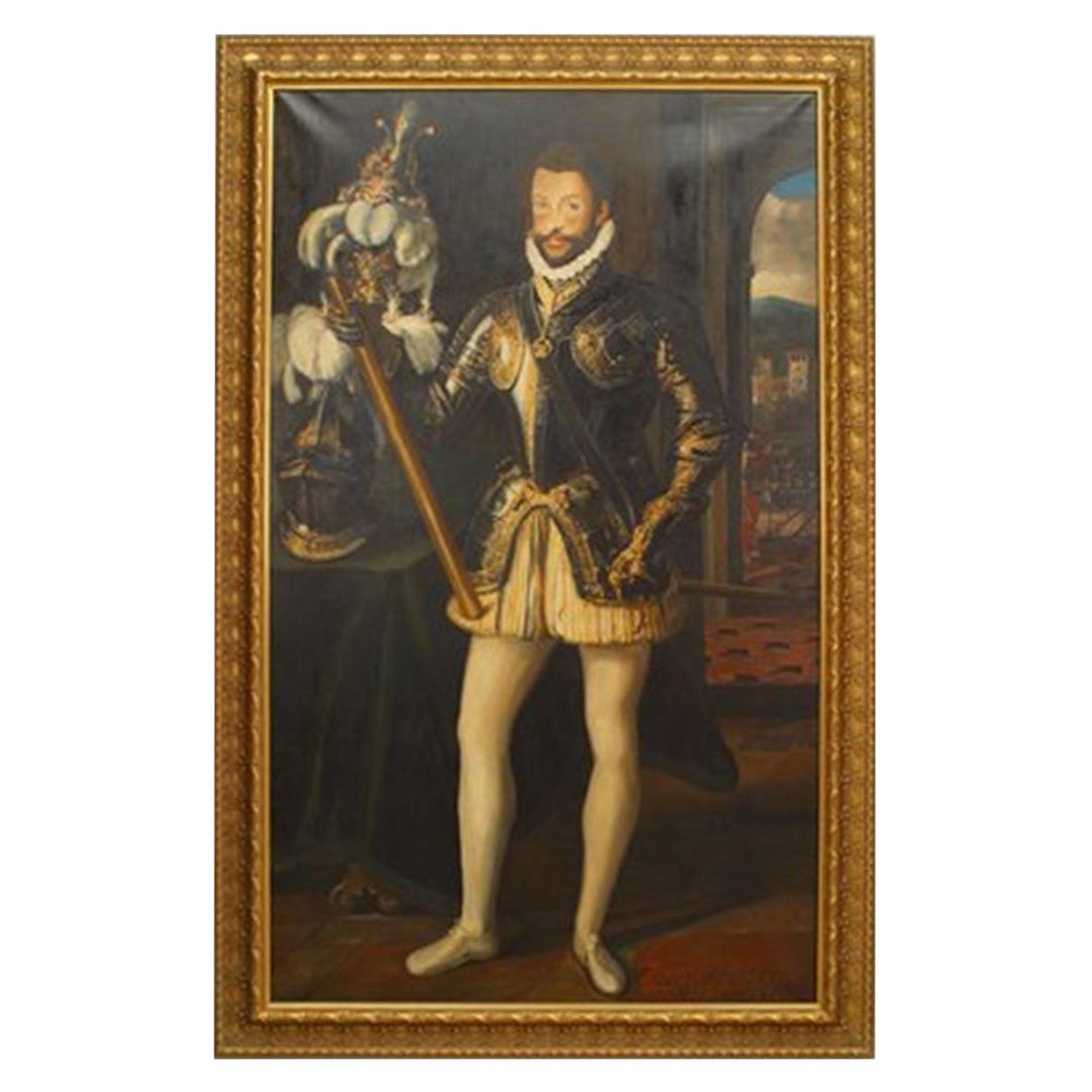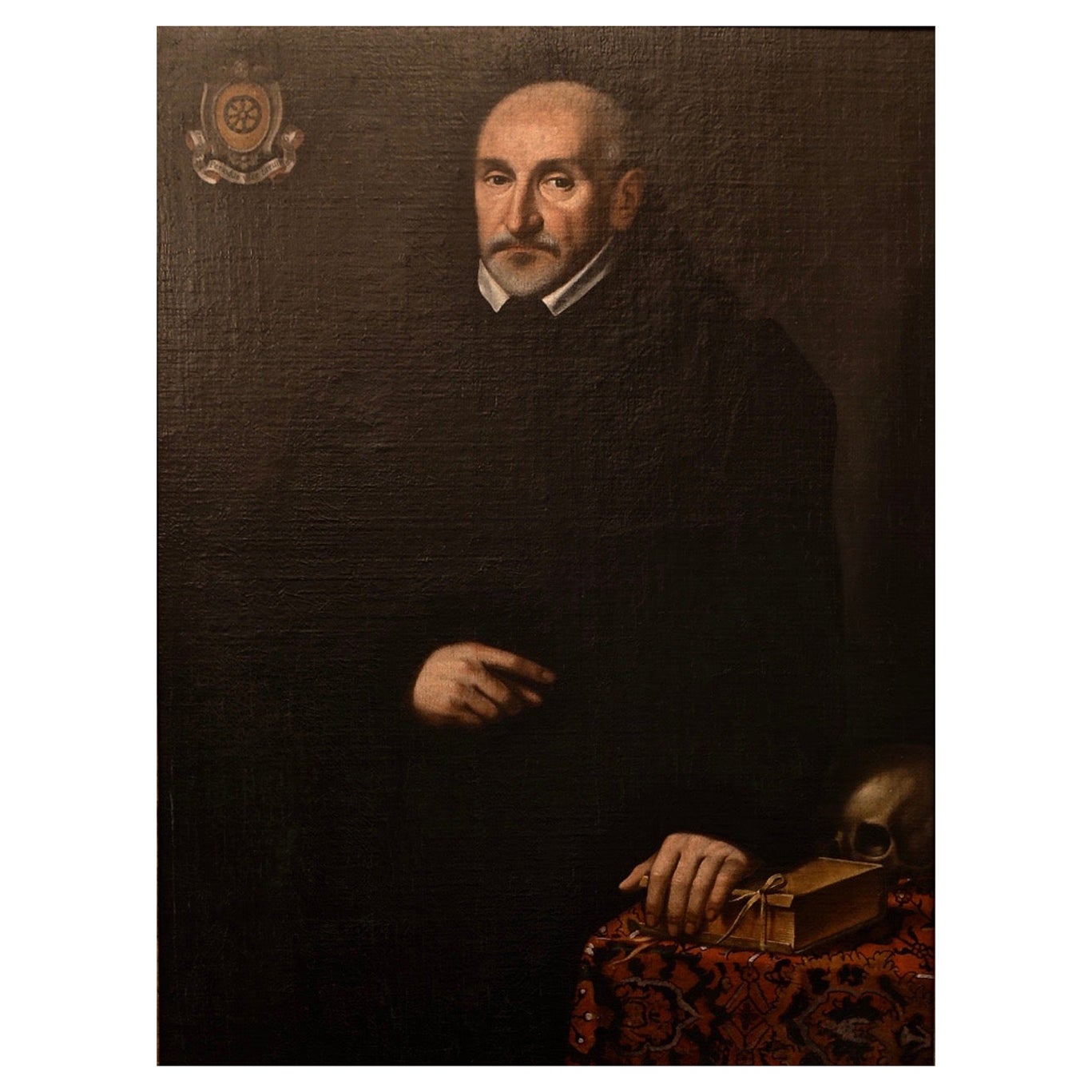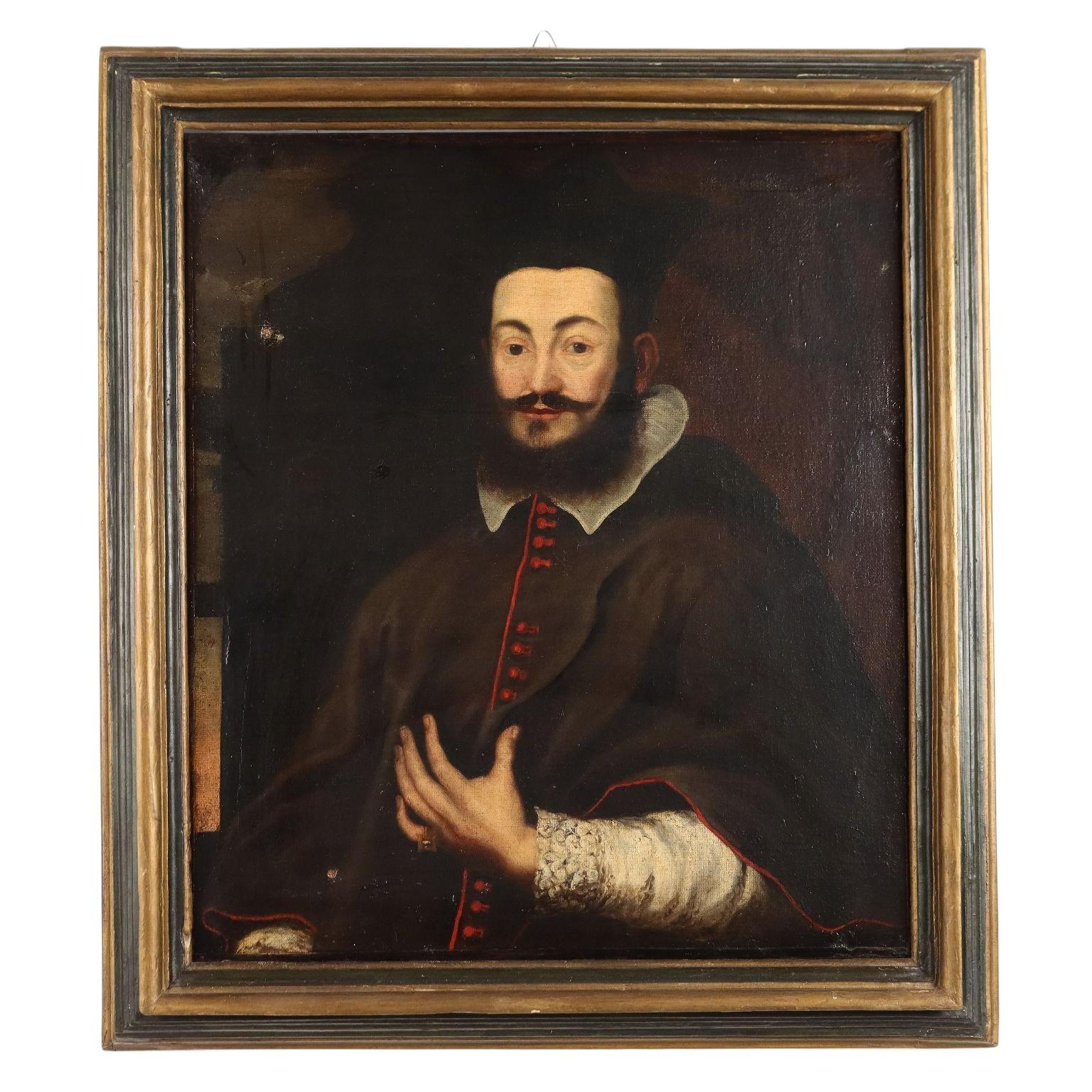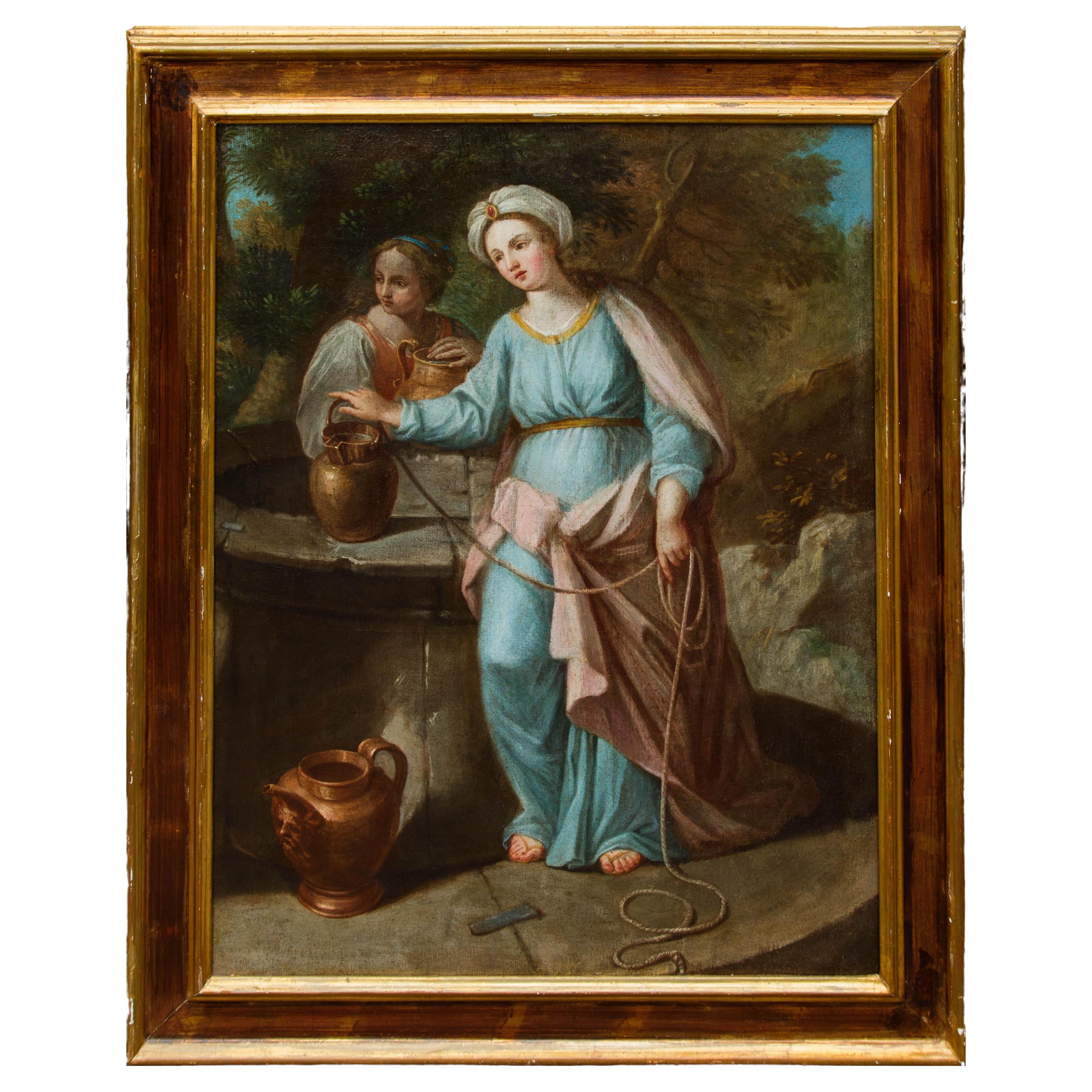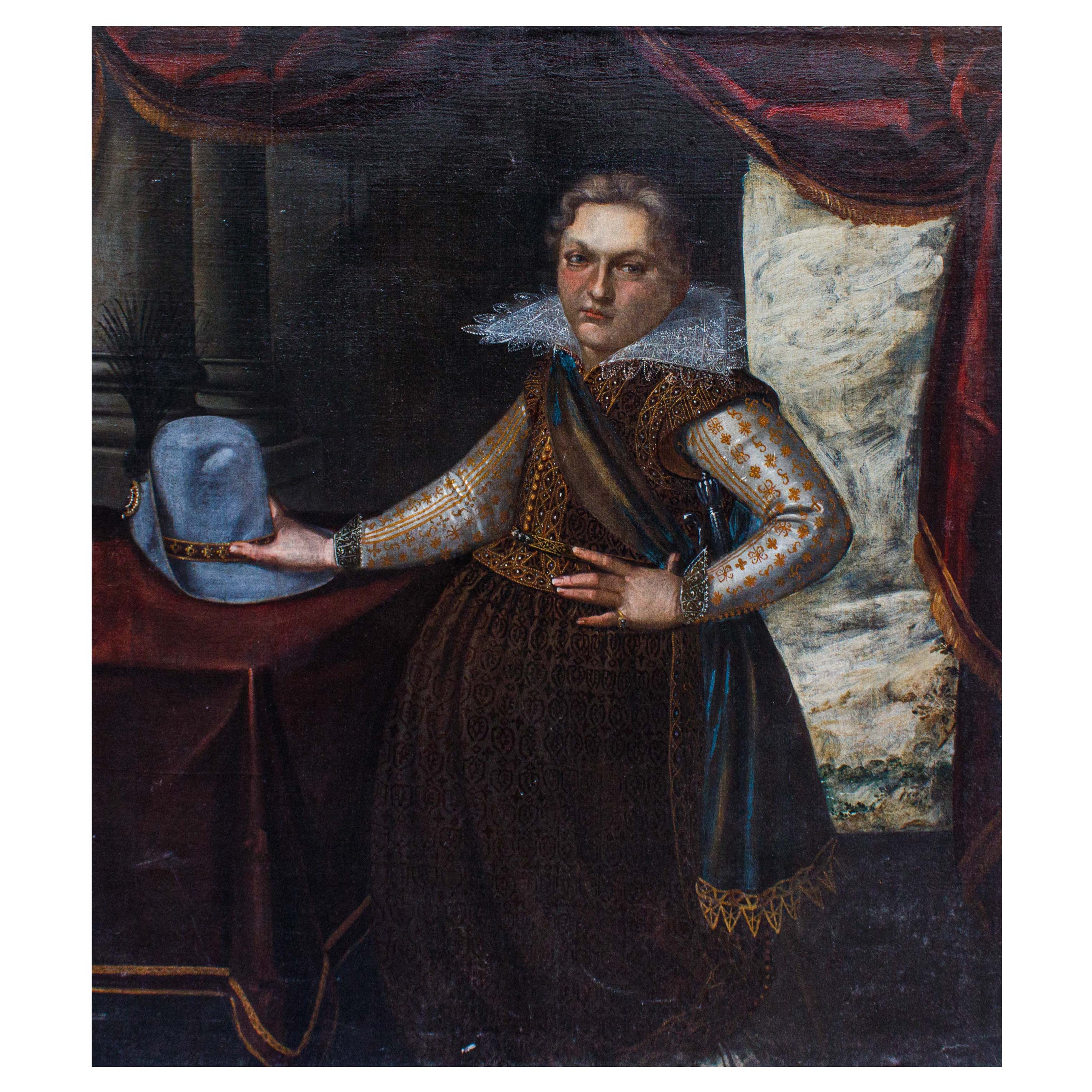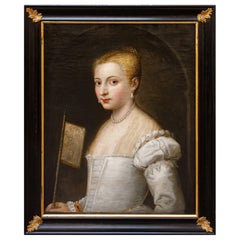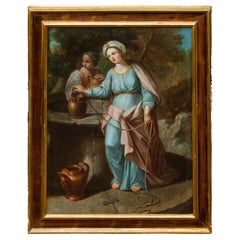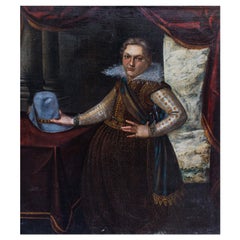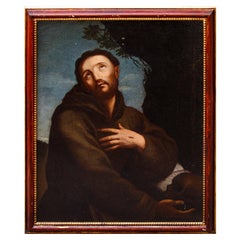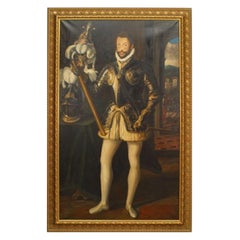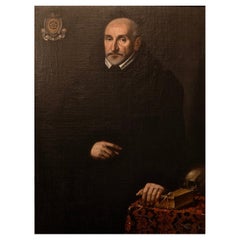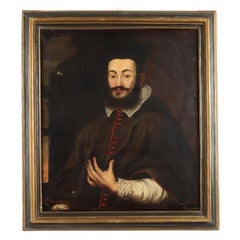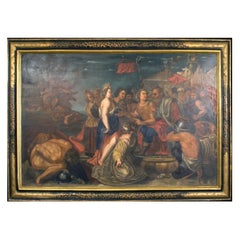Items Similar to 17th century, Lombard School, Portrait of a swordsman in profile
Want more images or videos?
Request additional images or videos from the seller
1 of 12
17th century, Lombard School, Portrait of a swordsman in profile
$4,073.69
£3,032.60
€3,400
CA$5,579.93
A$6,206.11
CHF 3,240.64
MX$75,521.70
NOK 41,387.86
SEK 38,814.51
DKK 25,883.01
Shipping
Retrieving quote...The 1stDibs Promise:
Authenticity Guarantee,
Money-Back Guarantee,
24-Hour Cancellation
About the Item
17th century, Lombard School
Portrait of swordsman in profile
Oil on canvas, 116 x 92 cm
We are confronted with an intriguing 17th-century painting, traceable to the Lombard school, which captures the figure of a swordsman portrayed in profile. The subject's clothing is a key element that underscores his era and cultural influence: in fact, he wears clothes in line with 17th-century Spanish fashion. The figure of the swordsman emerges with a certain austerity typical of portraiture of that period. His profile suggests an attentive pose, perhaps waiting or observing. The choice to depict him from the side, which is certainly archaic in nature, is a clear reference to famous portraits of the northern Italian sphere made between the fifteenth and sixteenth centuries and serves to emphasize the line of his body and, above all, the details of his dress. The garments, inspired by seventeenth-century Spanish fashion, were characterized by severe elegance and dark colors: the young man wears a tight-fitting, padded farsetto (or juxtaposition) that emphasizes the rigid silhouette; a stiff, pleated collar (the so-called gorget or lechuguilla), a distinctive element of Spanish fashion that gave an imposing, aloof air; and the sword, an element of identity, that hangs from an elaborate gold filigree belt.
The Lombard school of the seventeenth century, while welcoming outside influences such as Spanish, given the Spanish rule over the Duchy of Milan, always maintained its own distinctive sensibility. This often manifested itself in a focus on realism (not coincidentally, the artists active in 17th-century Lombardy are apostrophized by Roberto Longhi as "The Painters of Reality"), a predilection for dark, calm color tones, and a certain psychological introspection in portraits. The artist responsible for the painting, in line with the key features of the has rendered the swordsman with remarkable attention to physiognomic detail and light management that enhances his three-dimensionality and character.
- Dimensions:Height: 36.23 in (92 cm)Width: 45.67 in (116 cm)Depth: 1.97 in (5 cm)
- Style:Other (In the Style Of)
- Materials and Techniques:Canvas,Oiled
- Place of Origin:
- Period:
- Date of Manufacture:XVII Century
- Condition:Wear consistent with age and use.
- Seller Location:Milan, IT
- Reference Number:1stDibs: LU5918245953092
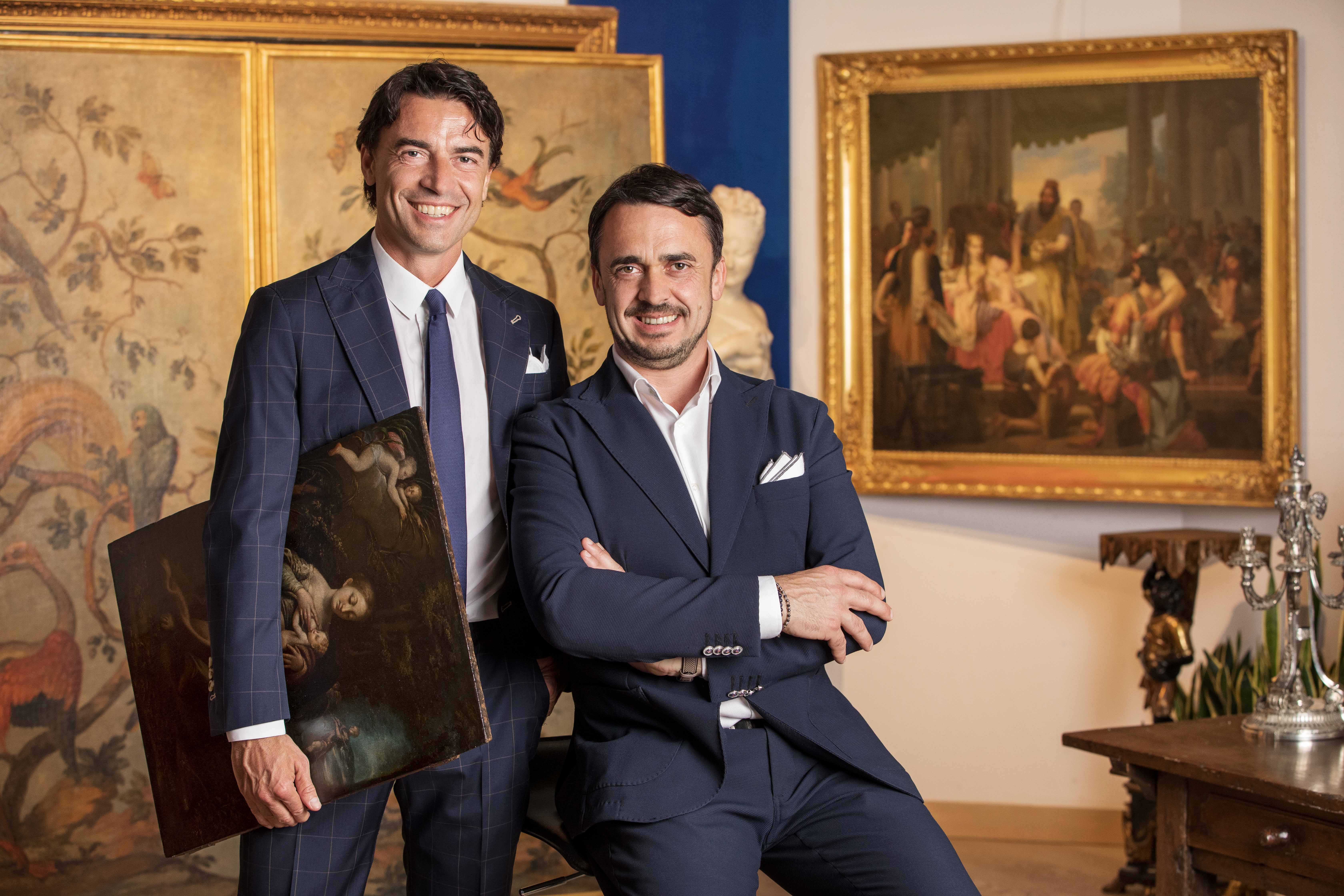
About the Seller
5.0
Vetted Professional Seller
Every seller passes strict standards for authenticity and reliability
Established in 2000
1stDibs seller since 2021
30 sales on 1stDibs
- ShippingRetrieving quote...Shipping from: Milan, Italy
- Return Policy
Authenticity Guarantee
In the unlikely event there’s an issue with an item’s authenticity, contact us within 1 year for a full refund. DetailsMoney-Back Guarantee
If your item is not as described, is damaged in transit, or does not arrive, contact us within 7 days for a full refund. Details24-Hour Cancellation
You have a 24-hour grace period in which to reconsider your purchase, with no questions asked.Vetted Professional Sellers
Our world-class sellers must adhere to strict standards for service and quality, maintaining the integrity of our listings.Price-Match Guarantee
If you find that a seller listed the same item for a lower price elsewhere, we’ll match it.Trusted Global Delivery
Our best-in-class carrier network provides specialized shipping options worldwide, including custom delivery.More From This Seller
View AllVenetian school, 18th century, Portrait of a gentlewoman with fan
Located in Milan, IT
Venetian school, 18th century
Portrait of a gentlewoman with a fan
Oil on canvas, 79 x 60 cm
Framed, 92 x 74 cm
The oil on canvas under consideration, to be referred to the Venet...
Category
Antique 18th Century and Earlier Italian Other Paintings
Materials
Canvas
Scuola emiliana, XVII secolo, Rebecca al pozzo
Located in Milan, IT
Scuola emiliana, XVII secolo
Rebecca al pozzo
Olio su tela, cm 76 x 58
Giunta la morte della consorte Sara, Abramo decide di cercare moglie al figlio Isacco. Pertanto, manda il suo ...
Category
Antique 17th Century Paintings
Materials
Copper
16th-17th Century Gentleman’s Portrait Oil on Canvas by Francesco Zucco
Located in Milan, IT
Francesco Zucco (circa 1575-1627)
Gentleman’s portrait
Measures: Oil on canvas, cm 120 x 140
The painting analyzed here belongs to the pictorial production of Francesco Zucc...
Category
Antique Early 17th Century Paintings
Materials
Canvas
Emilian school, 17th century, St. Francis
Located in Milan, IT
Scuola emiliana, XVII secolo
St. Francis
Oil on canvas, 73 x 59 cm
Framed, 83 x 69 cm
Patron saint of Italy, St. Francis (Giovanni di Pietro di Bernardone; Assisi, 1181/1182 - 1...
Category
Antique 18th Century and Earlier Italian Other Paintings
Materials
Canvas
Italian school, sec. XVIII, Portrait of a small dog
Located in Milan, IT
Italian school, sec. C18th
Portrait of a small dog
Oil on canvas, 48 x 40 cm
Picture frame, 58 x 48 cm
This canvas depicts with extreme precision and attention to detail a small ...
Category
Antique 18th Century and Earlier Italian Other Paintings
Materials
Canvas
18th century, Portrait of Karl Josef of Habsburg-Lorraine
Located in Milan, IT
18th 18th Century
Portrait of Karl Josef of Habsburg-Lorraine
oil on canvas, 29x23 cm
Framed, 47x37 cm
The retractor can be identified as Karl Josef of Habsburg-Lorraine, son of ...
Category
Antique 18th Century and Earlier Austrian Other Paintings
Materials
Canvas
You May Also Like
Emanuele Filiberto Portrait
Located in Queens, NY
Copy of a portrait of "Emanuele Filiberto", Italian military leader of the 1500's
Category
Late 20th Century Italian Baroque Paintings
Materials
Paint
Portrait of Gentleman from Della Ruota Family, Lombardy, Dated 1624
Located in Bruxelles, BE
Portrait of a Gentleman from Della Ruota family
Lombardy, dated 1624
Oil on canvas
Measures: 105 x 81 cm (without the frame)
The coat of arms at the top left of the portrait identifies the effigy as an aristocrat belonging to the Lombard family Della Ruota, represented at the age of 61 in 1624.
The presence of vanity at the bottom right is a clear reference to the passage of time, to the aging and dying body...
Category
Antique 17th Century Italian Renaissance Paintings
Materials
Canvas
Painting Portrait of a Clergyman 17th century
Located in Milan, IT
Oil on Canvas.
The painting was previously restored and re-tinted; it has a small hole in the upper left corner.
It is presented in a stylish, early 20th-century frame.
Category
17th Century Other Art Style Portrait Paintings
Materials
Oil
Large historical painting 18th century, Italian school
Located in Cesena, FC
Large historical painting 18th century, Italian school
"Darius' mother pleading before Alexander after the battle of Issus."
Oil on canvas 210 x 290 cm
Painted with great strength...
Category
Antique Late 18th Century Italian Paintings
Materials
Canvas, Wood, Giltwood
Leandro Bassano - 17th century - Portrait of a Savant
By Bassano
Located in Bruxelles, BE
Leandro Bassano (Bassano del Grappa 1557 - Venise 1662)
Portrait of a savant
Venise, XVI century
Oil on canvas; modern frame.
Measures: 117 x 88 ...
Category
Antique 17th Century Italian Renaissance Paintings
Materials
Canvas
$19,170 Sale Price
20% Off
Portrait of a Gentleman
By Ippolito Scarsella (Scarsellino)
Located in New York, NY
Provenance: Suida-Manning Collection, New York
Private Collection
Exhibited: Venetian Paintings of the Sixteenth Century, Finch College Museum of Art, New York, October 30-December 15, 1963, no. 31.
Veronese & His Studio in North American Collections, Birmingham Museum of Art, Oct. 1-Nov. 15, 1972, and Montgomery Museum of Fine Arts, Dec. 5-Dec. 31, 1972
Literature: Robert L. Manning, A Loan Exhibition of Venetian Paintings of the Sixteenth Century, exh. cat. New York 1963, cat. no. 31ill., as by Veronese
Stephen Clayton and Edward Weeks, eds., introduction by David Rosand, Veronese & His Studio in North American Collections, Birmingham 1972, as by Veronese, p. 38 ill.
Terisio Pignatti, Veronese, Venice 1976, I, p. 199, cat. no. A225, II, fig. 908, as attributed to Veronese
Terisio Pignatti and Filippo Pedrocco, Veronese; catalogo completo dei dipinti, Florence 1991, no. 54°, as attributed to Veronese.
Terisio Pignatti and Filippo Pedrocco, Veronese, Milan 1995, II, pp. 517-518ill., cat. no. A 56, under attributed paintings, by Veronese and workshop)
John Garton, Grace and Grandeur; The Portraiture of Paolo Veronese, London-Turnhout 2008, p. 237, fig. 77, cat. no. R16, as workshop of Veronese.
Scarsellino’s art is widely regarded as critical link between the Renaissance and the Baroque styles in Emilian painting; not only was he an important transmitter of the heritage of the Renaissance, but he was also open to innovative ideas, and was one of the earliest to experiment with the trend to naturalism that would become fundamental to art of the new century. Born around 1550, he received his earliest training from his father Sigismondo, an architect and painter; it was probably while working at his father’s side as a youth that he acquired the nickname Scarsellino, or “little Scarsella”. After absorbing the principles of his art in Ferrara and Parma, he went to Venice in 1570, staying for four years and working in the shop of Veronese. In the following decade, his art —especially in terms of its piety and its development of landscape— demonstrates a strong sympathy with that of the Carracci, with whom he worked in 1592-1593 at the Palazzo dei Diamanti in Ferrara. Maria Angela Novelli and later Alessandra Frabetti both propose that Scarsellino traveled to Rome, although such a trip has not been documented; if he did travel to Rome, it probably would have occurred during the years that Scarsellino’s colleagues Agostino and Annibale Carracci were there, that is, beginning in 1595 and until 1609. The last decades of Scarsellino’s career again involve stylistic experimentation, this time in a manner that would bring his work very close to the progressive figurative naturalism of Carlo Bononi and prepare the way for Guercino.
The present portrait of a distinguished gentleman had been long thought to be by Paolo Veronese and was in fact attributed to him by such distinguished connoisseurs as Adolfo Venturi and Wilhelm Suida. The portrait’s style is, however, distinct from Veronese’s, although clearly indebted to it, and the attribution to the young Scarsellino is wholly convincing. The painting would then date from the 1570s – a date confirmed by the costume the subject wears. The puffed hat that appears in the painting had a rather short-lived vogue in the early 1570s. One sees it in Giambattista Moroni’s Portrait of Count...
Category
18th Century and Earlier Baroque Portrait Paintings
Materials
Canvas, Oil
